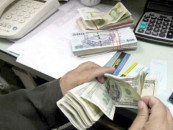Like Karachiites, the people of Harappa also took the issue of security quite seriously
Entry points to the historic cities would be closed at night, forcing visitors to stay in rest houses.

Entry points to the historic cities would be closed at night, forcing visitors to stay in rest houses.
Harappa, which was a part of the Indus Valley Civilisation, also seemed to have a strong affinity for trade, as its people were among the first to establish trade links with other historic civilisations.
These revelations were made by Dr Jonathan Mark Kenoyer of the University of Wisconsin (UW) at Madison, on Wednesday while he shared his research during an event titled, “The Recent Discoveries of Indus Valley Civilisation - Seals, Technology and Textiles” at the National Museum on Wednesday. The event was organised by the departments of antiquities and culture, and the Centre for Archeology and Environmental Research.
Dr Kenoyer is associated with UW’s anthropology department, and has been visiting Pakistan since 1974 to conduct research on the Indus civilisation. He has also engaged in excavation activities at Harappa since 1986.

Dr Kenoyer said that trade was the central tenet that seemed to connect six ancient civilisations. It formed the basis for frequent exchanges between residents of Mesopotamia, China, Egypt, Central Asia, and the Indian subcontinent.
However, despite the apparent linkages, cities in Harappa had some features that were unique. They seemed to have taken the issue of security quite seriously. “The people of Harappa were [among] the first in the world who installed gates [outside] their cities. They also made [rest houses] outside their [cities] for people who would come there in the night, after the gates had been closed.”
Seals and coins
The people of the Indus Valley Civilisation used different kinds of seals for trading purposes, with different symbols depicting different levels of power, said Dr Kenoyer. “The animals on the seals represent a community or a clan. Making a seal was not an easy task. The people were also fairly technologically advanced, as they were able to drill on beads.
Debunking myths
It is a common perception that the people of the Indus Valley Civilisation used to wear textiles that were made in China, but research has shown that they had made them themselves, said Dr Kenoyer. “Based on Indian textual references to silk from much earlier times,” the characterisation of these clothes as being made in China, “is suspect”.
Published in The Express Tribune, January 24th, 2013.



















COMMENTS
Comments are moderated and generally will be posted if they are on-topic and not abusive.
For more information, please see our Comments FAQ